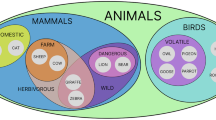Abstract
In an earlier paper [1], we described the mental pathology known as neurosis in terms of its relation to memory function. We proposed a mechanism whereby neurotic behavior may be understood as an associative memory process in the brain, and the symbolic associative process involved in psychoanalytic working-through can be mapped onto a process of reconfiguration of the neuronal network. Memory was modeled by a Boltzmann machine represented by a complete graph. However, it is known that brain neuronal topology is selectively structured. Here, we further develop the memory model, by including known mechanisms that control synaptic properties, showing that the network self organizes to a hierarchical, clustered structure. Two modules corresponding to sensorial and declarative memory interact, producing sensorial and symbolic activity, representing unconscious and conscious mental processes. This extension of the model allows an evaluation of the idea of working-through in a hierarchical network structure.
Preview
Unable to display preview. Download preview PDF.
Similar content being viewed by others
References
Wedemann, R.S., Donangelo, R., Carvalho, L.A.V., Martins, I.H.: Memory Functioning in Psychopathology. In: Sloot, P.M.A., Tan, C.J.K., Dongarra, J., Hoekstra, A.G. (eds.) ICCS-ComputSci 2002. LNCS, vol. 2329, pp. 236–245. Springer, Heidelberg (2002)
Freud, S.: Introductory Lectures on Psycho-Analysis. Standard Edition. W. W. Norton and Company, New York (1966); First German edition (1917)
Freud, S.: Beyond the Pleasure Principle. Standard Edition. The Hogarth Press, London (1974); First German edition (1920)
Spitzer, M.: A Cognitive Neuroscience View of Schizophrenic Thought Disorder. Schizophrenia Bulletin 23(1), 29–50 (1997)
Servan-Schreiber, D., Printz, H., Cohen, J.: A Network Model of Catecholamine Effects: Gain, Signal-to-Noise Ratio, and Behavior. Science 249, 892–895 (1990)
Kandel, E.R., Schwartz, J.H., Jessel, T.M. (eds.): Principles of Neural Science. MacGraw Hill, USA (2000)
Varela, F.J., Thompson, E., Rosch, E.: The Embodied Mind. The MIT Press, Cambridge (1997)
Ganong, W.F.: Review of Medical Physiology. MacGraw Hill, USA (2003)
Edelman, G.M.: Wider than the Sky, a Revolutionary View of Consciousness. Penguin Books, London (2005)
Taylor, J.G.: The Codam Model and Deficits of Consciousness I & II. In: Palade, V., Howlett, R.J., Jain, L. (eds.) KES 2003. LNCS, vol. 2774, pp. 1130–1148. Springer, Heidelberg (2003)
Hertz, J.A., Krogh, A., Palmer, R.G.: Introduction to the Theory of Neural Computation. Lecture Notes. Santa Fe Institute, Studies in the Science of Complexity, vol. I. Perseus Books, Cambridge (1991)
Carvalho, L.A.V., Mendes, D.Q., Wedemann, R.S.: Creativity and Delusions: The Dopaminergic Modulation of Cortical Maps. In: Sloot, P.M.A., Abramson, D., Bogdanov, A.V., Gorbachev, Y.E., Dongarra, J., Zomaya, A.Y. (eds.) ICCS 2003. LNCS, vol. 2657, pp. 511–520. Springer, Heidelberg (2003)
Chomsky, N.: On Nature and Language. Cambridge University Press, UK (2002)
Newman, M.E.J.: Random Graphs as Models of Networks. In: Bornholdt, S., et al. (eds.) Proceedings of the International Conference on Dynamical Networks in Complex Systems, Handbook of Graphs and Networks, from the Genome to the Internet, Wiley-VCH, USA (2003)
Watts, D.J., Strogatz, S.H.: Collective dynamics of ‘small world’ networks. Nature 393, 440–442 (1998)
Freud, S.: Project for a Scientific Psychology. Standard Edition, vol. I. The Hogarth Press, London (1966); First German edition (1950)
Author information
Authors and Affiliations
Editor information
Editors and Affiliations
Rights and permissions
Copyright information
© 2006 Springer-Verlag Berlin Heidelberg
About this paper
Cite this paper
Wedemann, R.S., de Carvalho, L.A.V., Donangelo, R. (2006). A Complex Neural Network Model for Memory Functioning in Psychopathology. In: Kollias, S.D., Stafylopatis, A., Duch, W., Oja, E. (eds) Artificial Neural Networks – ICANN 2006. ICANN 2006. Lecture Notes in Computer Science, vol 4131. Springer, Berlin, Heidelberg. https://doi.org/10.1007/11840817_57
Download citation
DOI: https://doi.org/10.1007/11840817_57
Publisher Name: Springer, Berlin, Heidelberg
Print ISBN: 978-3-540-38625-4
Online ISBN: 978-3-540-38627-8
eBook Packages: Computer ScienceComputer Science (R0)




